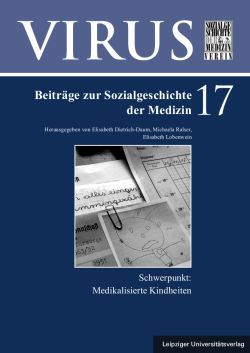
VIRUS Band 17, pp. 163-180, 2020/07/21
Schwerpunkt: Medikalisierte Kindheiten
Die neue Sorge um
das Kind vom ausgehenden 19. bis ins späte 20. Jahrhundert

In 1841 the first institute for cretin children was founded at the Abendberg near Interlaken in Switzerland. Medicine and education working together were to better, if not even cure these little patients. The enormous feedback Guggenbühl’s initiative received as well as the terminological variety to mark mental differences indicate the ambitions to reach a categorizationof intellectual impairment. This development took place within a significantly new atmosphereof charity and humanism being fundamental especially for the protagonists of the movement for so-called “idiots’ institutes” (doctors and educators). At the same time, different attitudestowards mentally impaired children can be outlined as well. This is exemplified by doctors first of all being interested in medical research, but is also been demonstrated by arguments within the communal society. Thus, the “idiots’ institutes” were highly ambivalent: on the one hand they intended to help disabled or impaired children to give them a chance for their future lives within the society – or if unsuccessful, at least shelter and asylum –, on the other hand the hospitalization of such children gave the opportunity to separate and exclude them from social participation.
Keywords: Johann Jakob Guggenbühl (1816–1863), Abendberg, cretinism, idiotism, mental disability